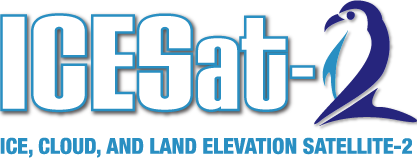The short film, called “Photon Jump,” officially premieres today at the Polar Science Weekend at the Pacific Science Center in Seattle. It was created by a team of students at Georgia’s Savannah College of Art and Design, or SCAD, with input and guidance from ICESat-2 outreach team members and scientists.
“The goal of the project was to allow students to develop ideas and be involved in the production process,” said Helen-Nicole Kostis, a science visualizer at NASA’s Goddard Space Flight Center in Greenbelt, Maryland, who led the NASA ICESat-2/SCAD Collaborative Student Project.
Pho, a plucky bright green photon of light, must travel from a NASA spacecraft down to Earth and back again to help complete a crucial science mission in this educational short film. The animation was created and produced by media art students from the Savannah College of Art in Design in Georgia, in collaboration with ICESat-2.
Credits: NASA/Goddard/Savannah College of Art and Design et al. This video is public domain and can be downloaded from the Scientific Visualization Studio.
It was also an opportunity for the mission to try a new outreach approach. ICESat-2, slated to launch in 2018, is designed to measure Earth’s height and allow scientists to monitor change, especially in ice-covered regions. Students trained and skilled in media arts and animation could come up with ways to introduce the satellite mission to people, especially children, who perhaps weren’t already interested in science, Kostis said.
“We wanted to explore the contribution that art students and professionals can have in a technical and science project,” Kostis said. “We engaged with students from a wide variety of applied art disciplines and offered them a blank canvas for developing ideas.”
The students started by learning all about ICESat-2. Mission scientists and engineers gave presentations about how ice-covered regions like Greenland and Antarctica are changing, and how the satellite’s instrument is designed to use green lasers to measure changes in surface height. Some students later visited Goddard and saw first-hand how the instrument was being built and tested, and asked even more questions.
Students developed and pitched a wealth of ideas during the school’s Collaborative Learning Center course, and then selected projects — including “Photon Jump” — were developed with the supervision of Kostis and SCAD professor Deborah Fowler.
“One of the things the Collaborative Learning Center is focused on is preparing students for career success,” Fowler said. “It’s highly collaborative, and they have to think outside of their comfort zone.”
They practiced presenting their ideas in a professional setting, and revised their proposals based on feedback. From technical ICESat-2 details about lasers and sea ice, they created entertaining ways to make people curious about the mission.
“One of the major goals of the effort was to come up with new ways of reaching people,” Fowler said.
Once the students developed and pitched ideas during the course, several went on to customized paid internships with the ICESat-2 project to bring selected products to life. The students designed posters, a hologram-like bookmark, a website design — and cartoon characters including Pho the Photon (pronounced like “faux,” not like the Vietnamese noodle dish).
The idea of Pho evolved over time to become a story that echoes what happens as ICESat-2’s lasers beam down to Earth. About 20 trillion photons leave with each pulse. A handful make it back and have their time of flight recorded. Computers then calculate the distance a photon travelled, and from that the height of Earth below. It’s a complex process — and one that the students took on to animate as a hero’s journey in the “Photon Jump” film.
“Working with the students was a fantastic experience,” said Thorsten Markus, ICESat-2 project scientist, who originally proposed the idea to reach out to art students. “I was stunned by their interest in the scientific as well as technological details, by their ability to quickly grasp the major concepts, and, obviously, by their creative thinking.”
“Photon Jump” will play at several museums across the country.
Original article by Kate Ramsayer posted on NASA.gov.


